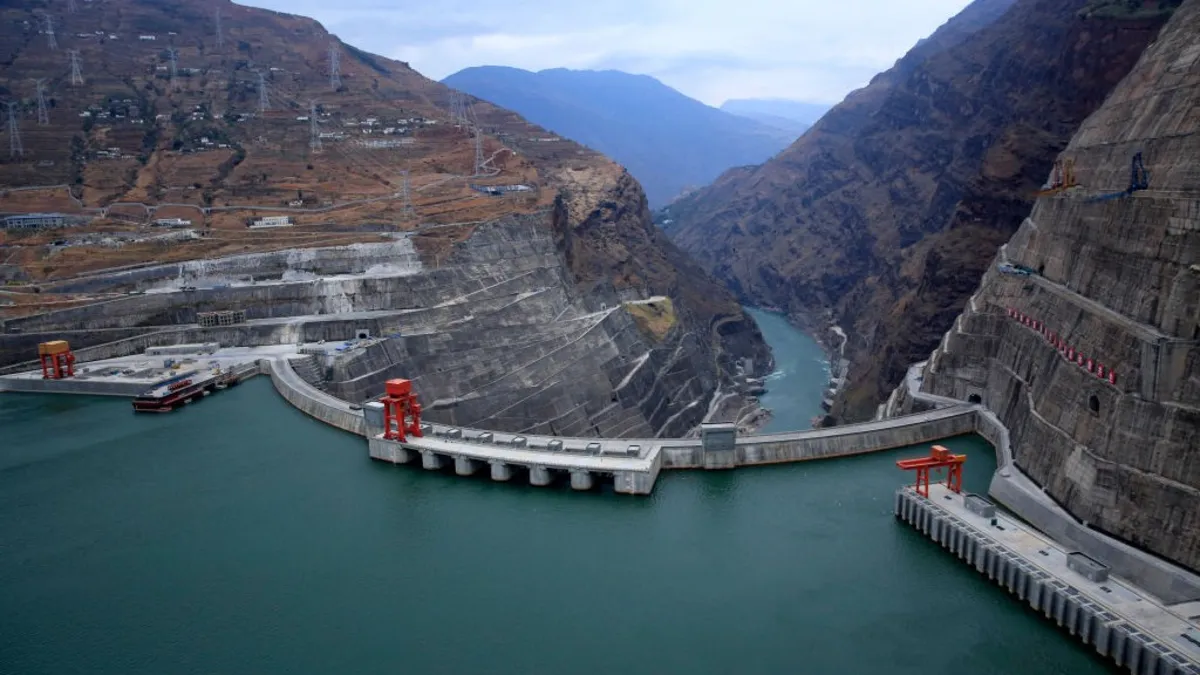
The construction of thousands of dams since 1835 has significantly influenced Earth's poles, according to groundbreaking research. Scientists have discovered that the sheer volume of water stored in large dams redistributes mass across the globe, affecting the position of Earth's crust in relation to the mantle, which is the planet's middle layer. This phenomenon occurs because the Earth's mantle is semi-fluid, allowing the solid crust to slide over it. Consequently, the weight of water trapped in these dams causes shifts in the crust, which in turn influences the location of the Earth's poles.
Researchers explain that any movement of mass within the Earth or on its surface alters the orientation of the rotation axis relative to the crust, a process known as true polar wander. This finding was detailed in a study published on May 23 in the journal Geophysical Research Letters. Previous studies have indicated that human activities, which displace vast amounts of water, can trigger polar wander. For instance, climatic changes have led to dramatic ice melt, potentially moving the poles by as much as 90 feet (27 meters) by the end of this century.
Moreover, a 2023 study revealed that groundwater extraction between 1993 and 2010 resulted in a polar drift of 31 inches (80 centimeters). In the latest research, scientists explored the effects of 6,862 dams constructed worldwide from 1835 to 2011 on the movement of the poles. Utilizing a previously published database, the researchers found that the total volume of water held by these dams could fill the Grand Canyon twice, leading to a 0.9-inch (23 millimeters) reduction in global sea levels.
The study concluded that storing water behind dams has caused the Earth's poles to shift by a total distance of 3.7 feet (1.1 meters) over the examined period. Natasha Valencic, the lead author and a graduate student at Harvard University, emphasized that trapping water behind dams not only removes water from the oceans, contributing to a decline in global sea levels, but also redistributes mass differently around the planet.
Through computer modeling and calculations, the researchers identified two distinct phases of polar wander. The first phase, spanning from 1835 to 1954, corresponds to extensive dam construction in North America and Europe. This phase resulted in a migration of the North Pole 8 inches (20 centimeters) closer to the 103rd meridian east, an imaginary line traversing Russia, Mongolia, and China. The second phase, from 1954 to 2011, was characterized by significant dam constructions in East Africa and Asia, which added mass to the opposite sides of the globe. This led to a 22-inch (57 centimeters) shift of the North Pole toward the 117th meridian west, which runs through western North America and the South Pacific.
While the movement of the poles has relatively minor impacts on Earth's processes, the influence of dams on sea levels is considerable. Valencic stated, "We're not going to drop into a new ice age because the pole moved by about a meter in total, but it does have implications for sea level." The findings suggest that scientists need to consider the role of dams in their sea level rise projections, as these structures prevent a significant volume of water from reaching the oceans.
During the 20th century, global sea levels rose by 4.7 to 6.7 inches (12 to 17 centimeters), with approximately a quarter of that water being stored behind dams. Depending on geographical location, the impact of dams on sea levels can be substantial. Valencic remarked, "That's another factor we need to consider, because these changes can be pretty large, pretty significant."